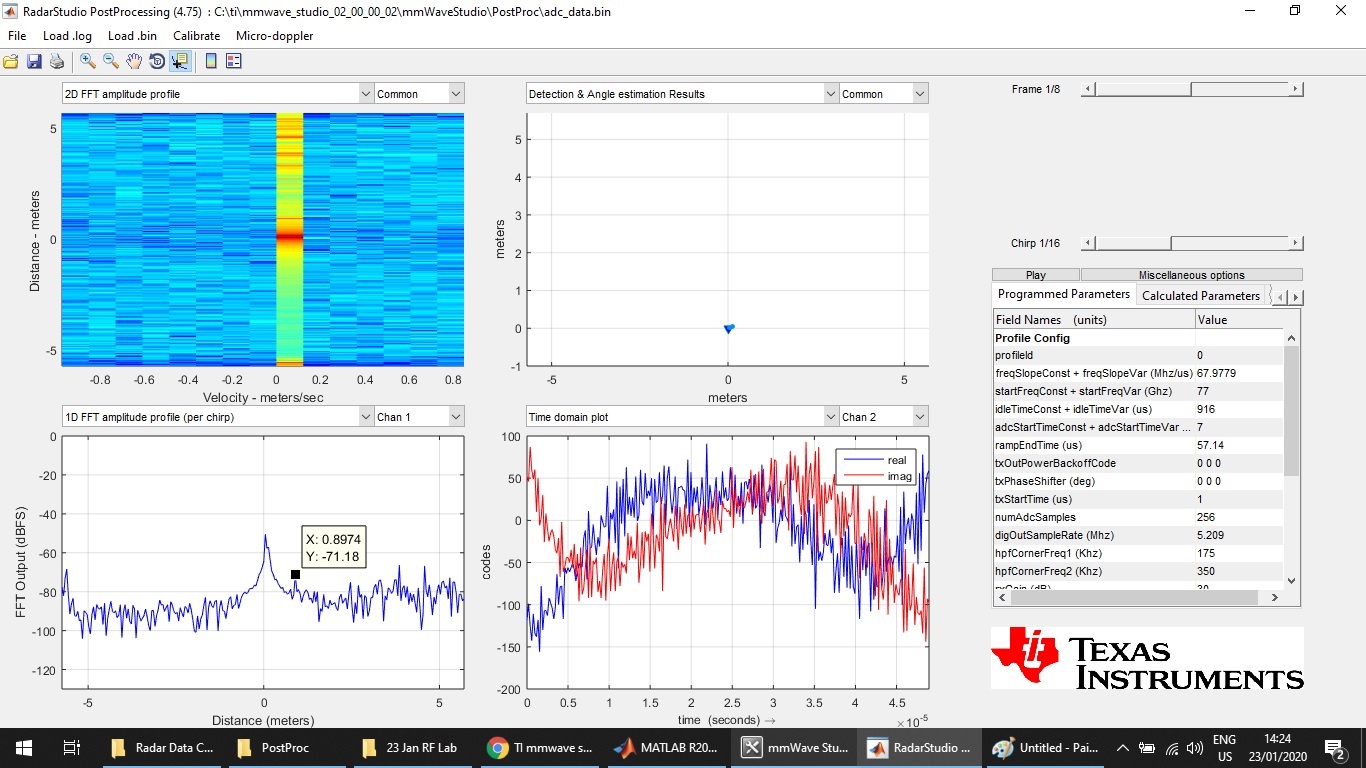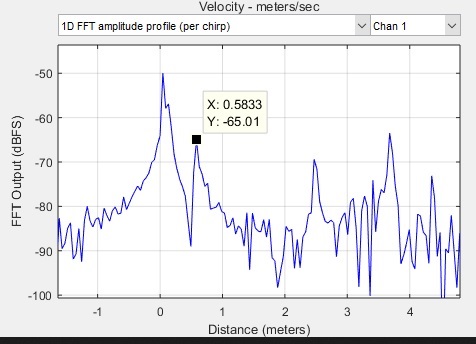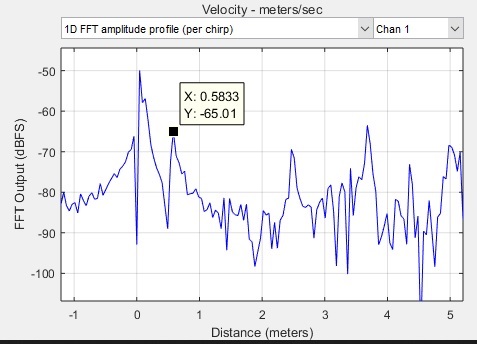Other Parts Discussed in Thread: AWR1642
hi,
I am learning TI mmwave sensors using AWR1642 (ES2.0) + DCA1000 EVM with a Windows 10 laptop and mmwave Studio 02.00.00.02. I am collecting 2x complex data from the ADC.
Almost virtually always, when I study Range FFT in post processing by mmwave Studio, I find a peak that starts from Range 0 and decays gradually. The Range profile (inclduing noise floor and and target peaks) is clear to me and I understand it.
But I am not clear why this initial peak is always occurring at 0 range ? I am attaching a sample figure of Post Processing Window screen shot. Please ignore the data tip and please just consider the peak at 0 range and advise possible cause(s) / phenomenon for its occurrence.
Thanks and regards





